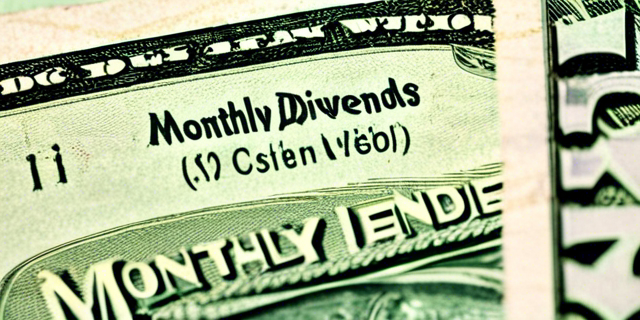What is the Debt Snowball Method and Does it Work

The debt snowball method is a debt repayment strategy that focuses on paying off your smallest debt balances first before moving to larger ones. The idea is that by getting some quick “wins” and eliminating debts entirely, you build momentum that motivates you to stick with your repayment plan and ultimately become debt-free. But does it actually work better than other methods?
How the Debt Snowball Method Works
The debt snowball method has you list out all your debts from smallest balance to largest balance, ignoring interest rates. You would then:
- Make minimum payments on all debts except for the smallest balance
- Pay as much as possible on the smallest balance
- Once it’s paid off, roll the amount you were paying on that into the next smallest balance
- Repeat this process as you plow through your list until everything is paid off
The key aspect that makes this a “snowball” method is that as you pay off each balance, you begin rolling more and more money into your next target debt. Like a snowball tumbling down a hill, that money builds momentum and grows as debts get erased.
Why Start With the Smallest Debt?
Supporters of the debt snowball method argue that paying off small debts first gives you some quick “wins” on your debt repayment journey. By knocking out those first couple of tiny debts, you start building motivation that helps you stick with your strategy.
Seeing debt balances fall to zero is extremely gratifying. You also simplify your finances by reducing the number of monthly payments. All this makes your debt repayment efforts feel more manageable.
The debt snowball isn’t overly concerned with paying down the most expensive debt first. It prioritizes small psychological victories to make you feel empowered and motivated.
Compare it to the Debt Avalanche Method

The closest alternative would be the debt avalanche method. With this strategy, you list out your debts by interest rate instead, from highest to lowest. The process then works the same way:
- Make minimum payments on all debts except the one with highest interest
- Put as much money as possible towards that debt
- Repeat for each subsequent debt based on interest rate
So with avalanche, you target the most expensive debt first, paying as much as possible while making minimums on the rest. The debt snowball method has you attack the smallest balances first regardless of rates.
What Are the Pros of the Debt Snowball?
There are good reasons why the debt snowball strategy is favored by many financial experts. Let’s review some of the notable pros.
1. Psychological and Motivation Boost
As mentioned already, the satisfaction of quickly paying off smaller debts can motivate you to keep attacking your repayment plan. It gives your brain some quick “wins” and positive reinforcement that will hopefully inspire you to keep going.
If you started instead with a large 5-figure credit card balance for example, it could feel hopeless to make progress or like you aren’t getting anywhere. Even with responsible monthly payments, it could take years to erase. Tackling a few $500 or $1000 balances first counteracts this feeling.
2. Simplifies Repayment Tracking
Another advantage of debt snowball is reducing the number of monthly payments floating around. Say you start with 5 debts – knocking the two smallest balances out cuts that down to 3 monthly payments you have to track. Fewer open debts makes personal accounting much simpler.
3. Flexibility for Cash Flow Issues
If you are ever struggling one month to make the full set of debt payments, having fewer open debts gives you flexibility. You can focus that month’s available cash on the remaining balances and temporarily make minimums or reduce payments if needed to the others without increasing long term interest costs.
For example, imagine you lose a client and are short on cash for the month. If you had 8 open debts still, you may need toIncrease your credit card balances or take on expensive payday loans to cover all the payments. But if you’ve paid down to the last 2-3 debts, you can more easily direct available funds to keep tackling those without needing other debt sources to stay afloat.
4. Frees Up More Cashflow Over Time
As you pay off debts under debt snowball, the money previously put towards those monthly payments is rolled forward. This means more and more of your cashflow is directed at the next target debt each time one gets paid off.
This expanding cashflow snowball effect lets you build momentum and speeds up how fast the next debts can be repaid since you aren’t splitting money across as many open balances.
5. Don’t Necessarily Pay Way More Interest
Critics argue that ignoring interest rates with debt snowball means you pay significantly more in interest overall. However the difference may be fairly negligible, especially for consumers with decent credit and mostly moderately high interest debts.
If your annual percentage rates on credit cards and loans mostly range from 9-15%, picking the lowest balances first rather than focusing on a 12% balance over a 15% balance may not change total interest costs that much in the few years it takes to repay debts. The exact difference depends on your specific debt load though.
What Are the Cons of Debt Snowball?
Of course, no debt payoff strategy is perfect. There are some notable drawbacks and critiques to understand as well before adopting the debt snowball.
1. Not Optimized to Save on Interest Costs
The biggest criticism is that this approach is not mathematically optimized based on interest rates. By tackling the highest rate balance first under debt avalanche, you would pay debts off in a way that minimizes total interest paid over time. Debt snowball will likely cost more in interest expenses than structuring payments strictly by annual percentage rate.
Whether this has a small impact or costs someone thousands of dollars extra compared to avalanche method depends entirely on the specifics of their situation. That leads into the next point…
2. Success Highly Dependent on Individual Psychology
There are many mathematical models showing debt avalanche saves more money over time compared to debt snowball. However, these analyses ignore human psychology and behavior factors. Research shows that people struggling with debt often lack motivation and struggle to stick to repayment plans.
The argument for debt snowball is that the psychological boost of quick wins pays off by inspiring continued dedication to becoming debt free. Someone may pay an extra few hundred in interest but actually succeed in wiping out all debts. Whereas someone purely focused on rates might save money in models but then fail to stick to their strategy and end up defaulting or taking longer to repay.
For some personalities, debt snowball is more about optimizing the human than the math. So this method really depends on how much those psychological victories can push you.
3. Potential Prepayment Penalties
One financial danger to note is that certain debts like mortgages or auto loans can charge penalties if you pay them off too early. By structuring debt snowball so theseballoon payment loans get tackled first in the queue, you may trigger fees that actually lose you money compared to other strategies.
It takes a bit more research and planning to avoid these prepayment penalties if wanting to optimize debt snowball’s balance wiping momentum.
4. Credit Score Benefits Questionable
Some assume that rapidly eliminating debts under debt snowball must be fantastic for your credit score. However, credit scoring algorithms do not place extra value on getting rid of accounts entirely and often benefit from keeping longstanding accounts open.
Unless eliminating a small debt lets you seriously reduce utilization % across your remaining mix of debts, credit score impact may be neutral. Scores weigh factors like payment history and credit mix, not just total debts paid off.
5. Risk of Backsliding on Progress
Lastly, there is psychology risk of undoing your debt snowball progress. As you pay off a couple small debts and your monthly cash flow improves, lifestyle inflation can sneak back in. You may redevelop appetites to overspend that then saddle you with new debts erasing the progress from your paid off balances.
Who Is Debt Snowball Best Suited For?
While there are some cons like above to weigh, the debt snowball system does have merit – when matched properly to someone’s financial personality and situation. So what are good candidate profiles?
- People that struggle with budgets/plans and need wins
- Those with lots of small debts below $5-10k
- People with debts largely in same moderate rate range already
- Primarily fixed rate installment debt like student loans
- Personalities requiring visible results to stay motivated
If you relate to several of those – try out the debt snowball! Having 5 student loans from $2-7k would be perfect example. Knocking a couple of the tiniest ones out gives you results while rate differences are minor.
Just be sure you don’t have major high interest credit card or payday loan debt in the mix driving up rates. And watch that you don’t overspend and backslide once the early wins boost your cash flow as debts start disappearing.
How Do You Execute the Debt Snowball Effectively?
Convinced this is the right repayment strategy for your debt load and mentality? Here are key steps to implement an effective snowball plan:
1. List Debts Smallest to Largest Balance
Grab all your debt statements and compile everything into one master list, ignoring interest rates. That means putting the $500 credit card first and $8000 student loan last, even if the credit card charges 20%. List just the balances due, not monthly payments.
2, Calculate Total Minimum Payments
Tally up minimum payments across all debts for an absolute baseline you have to hit each month. This ensures no accounts default or get behind on payments as you attacksmallest balances.
3. Figure Out How Much Extra Cashflow Exists
Make a monthly budget if you don’t already have one to accurately account for all necessary living expenses. Any money left is the extra debt snowball cash flow you have for tackling the first target balance.
4. Pay Minimums on All But Smallest Balance
Take that available extra monthly cash and put it entirely toward your first small balance account while just paying minimums on the rest. Ignore interest differences at this point and focus solely on wiping out the smallest dollars first.
5. Repeat Snowball Ramp for Next Debt
As soon as your smallest balance hits zero, roll that monthly payment money into the next smallest balanceon your list. For example, if the first debt payment was $75 per month, you now have an extra $75 to put towards debt #2 ontop of existing available payment cash.
6, Continue Until All Debts Are Gone
Keep following this pattern of full extra payments on the current smallest balance debt and minimums on the rest as you plow through your list. Each erased balance increases payments to the next one. Once all debts are gone, do a happy dance and start building savings!
Tips to Maximize Debt Snowball Success
Heeding this general framework can produce great results. But you may need some additional strategies or tools to help you execute it smoothly or stick to the plan. Here are pro tips:
- Automate payments and increases wherever possible so you easily sustain snowball without much effort as debts decrease
- Use spreadsheet trackers or debt payoff apps to monitor progress which enhances motivation
- Establish strict spending rules once initial debts are repaid to prevent new balances from sabotaging your snowball
- Strategically wield balance transfer offers with low promotional rates to accelerate payoff speed of higher rate debts as progress allows
- Pair extra principle payments with biweekly mortgage payments rather than monthly to build faster equity snowball ontop of normal debts
- Plug one-off cash windfalls like bonuses or tax refunds toward current snowball balance target to speed up timeline
- Celebrate each milestone as you cross out debts with a small splurge without going overboard creating new balances
Creating a Debt Snowball Calculator
For hands-on tracking and planning, creating your own customizable debt snowball calculator in a spreadsheet is extremely helpful. This lets you model out projections for each target debt balance based on your cash flow and when it can be erased.
Here is an example template you can copy showing the key columns and formulas to leverage:
| Balance | Interest Rate | Min Payment | Extra Payment | Total Payment | Months to Payoff |
|---|---|---|---|---|---|
| $2000 | 15% | $50 | $100 | =B3+E3 | =B2/(D2+E2) |
Populating Expected Payoff Date and then Tracking Actual Payoff Date as you progress provides another layer of modeling and satisfaction from crossing out debts on schedule or early.
There are also free debt snowball calculator templates and paid apps/tools online providing these tracking functionalities if you don’t want to build your own spreadsheet version.
When to Use Snowball Calculator Projections
Beyond the baseline motivation tracking, having target payoff dates in your calculator enables strategic planning if life throws surprises at your repayment efforts. For example:
- Model delays if temporary job loss forced you to reduce extra payment months
- See impact of injecting a tax refund or bonus to accelerate goals
- Decide if balance transfer makes sense for high rate debts
- Shift payments if risk missing a payoff target
Carefully crafted Excel models keep you masterfully working your debt snowball!
Finding the Money to Feed Your Debt Snowballs

Of course, all this strategy means little without cash flow to actually fund attacking your debts. Beyond bare minimum payments, where can you find extra monthly money to chip away at balances?
Increasing Income
First prize is bringing home bigger paychecks. Options range from:
- Negotiating a raise/promotion at work
- Finding a higher paying job
- Taking on side gigs/freelance in your expertise area
- Starting a small business that takes off
- Monetizing a hobby with crafts, services, self-publishing books/courses etc.
The key is picking income streams fitting your unique skills, interests and experience. Find friends and mentors thriving financially to brainstorm ideas.
Cut Expenses Without Living Miserable
If income jumps aren’t feasible, examining spending trims might redirect cash towards debts:
- Downsize housing to rent below your means
- Slash subscriptions and memberships no longer used
- Cook more meals at home rather than eating out
- Find cheaper insurance policies as policies renew
- Reduce utility bills with conservative usage and efficient appliances
- Write down every expense and category for a month to identify waste
- Cull impulse shopping and establish decision timeout rules
With an entire family budget blueprint in hand, there may be hundreds of dollars to divert towards debts without feeling deprived.
Balance Transfer Strategic Credit Leveraging
If already maximizing income flows and trimming costs with nothing more to cut, balance transfer credit cards effectively tap debt to crush debt. This takes advantage of low introductory rates.
The key is not increasing your net debt while doing so and having a plan to aggressively pay off the balance before rates spike at the end of promotional periods. Do so judiciously only once establishing a solid repayment foundation on earlier debts.
Used correctly however, zero percent transfers can provide the nitrous oxide boosting your debt snowball momentum!
Tracking Your Debt Snowball Progress Over Time
As previously mentioned, diligently monitoring your snowball method results is vital for staying motivated. Beyond the raw numeric tracking, also consider posting:
- Copies of debt payoff confirmation letters
- Screenshots of your debt dashboard as balances reach $0
- Pictures/gifs of you doing a “debt freedom” happy dance
- Rewards you gift yourself for milestone achievements
Physically seeing the outputs of your efforts hit home much more emotionally. Find whatever visual storytelling elements keep you pumped to stick to the repayment roadmap when temptation or frustration hits.
Also leverage apps like Debt Payoff Planner, Debt Free, Debt Destroyer, Digit, or Trello to track debts across nice interfaces and stay on your game. Gamify the journey!
Course Correcting Your Debt Snowball Plan
On the flip side, your debt tracking may reveal setbacks impeding hoped for timelines:
Perhaps you realize:
- Interest rates are swelling faster than projected on variable debts
- You unexpectedly needed to cashflow urgent car repairs
- Minimum payments increased thanks to rate hikes or lapsed promotional financing
- A new medical bill or family crisis expense popped up
- Your debt snowball plan relied on overtime that got cut
When facing obstacles like this, resist feeling defeated and falling off the wagon! Instead, rework your debt snowball calculations to account for the new scenario.
See how adjusting extra payments and timelines across debts gives you an updated path to progression. Having those models in place make course corrections much easier to process emotionally and strategically.
The key with any good financial plan is adapting to changing realities while keeping your eyes on the long term debt freedom prize.
When Debt Snowball May Not Work
While this strategy is tailored to spark hope and momentum for many debt strugglers, it does have some situations where it may falter:
1. Overspending Habits Out of Control
If you consistently spend way beyond your means and add new debts as fast as old ones get paid off, no repayment approach will work. Get spending and underlying money mindset issues under control first before trying to snowball debts.
Seek help from a financial therapist or coach to shift habits, perspective, and relationship with money first. Lifestyle design changes likely needed before tactical optimizations.
2. Mostly High Interest Credit Card and Payday Debt
When debt mix has lots of 20-30%+ credit card and payday loan debt, debt avalanche likely better leveraging the huge rate differences over fast balance erasure. Depends on your mental wiring still, but less chance of snowball being optimal.
3. Mortgage Significantly Higher Interest Than Other Debts
Similar to above, if your mortgage APR is much higher than other debts, skipping it to pay off smaller balances first misses big savings opportunity from accelerating home equity. Run the numbers in this case before committing to a suboptimal snowball plan.
4. Prepayment Penalty Risks on Specific Debts
Certain loan types like many mortgages, auto financing, business financing etc have fees if trying to overpay too quickly. Debt snowball maximizing extra









